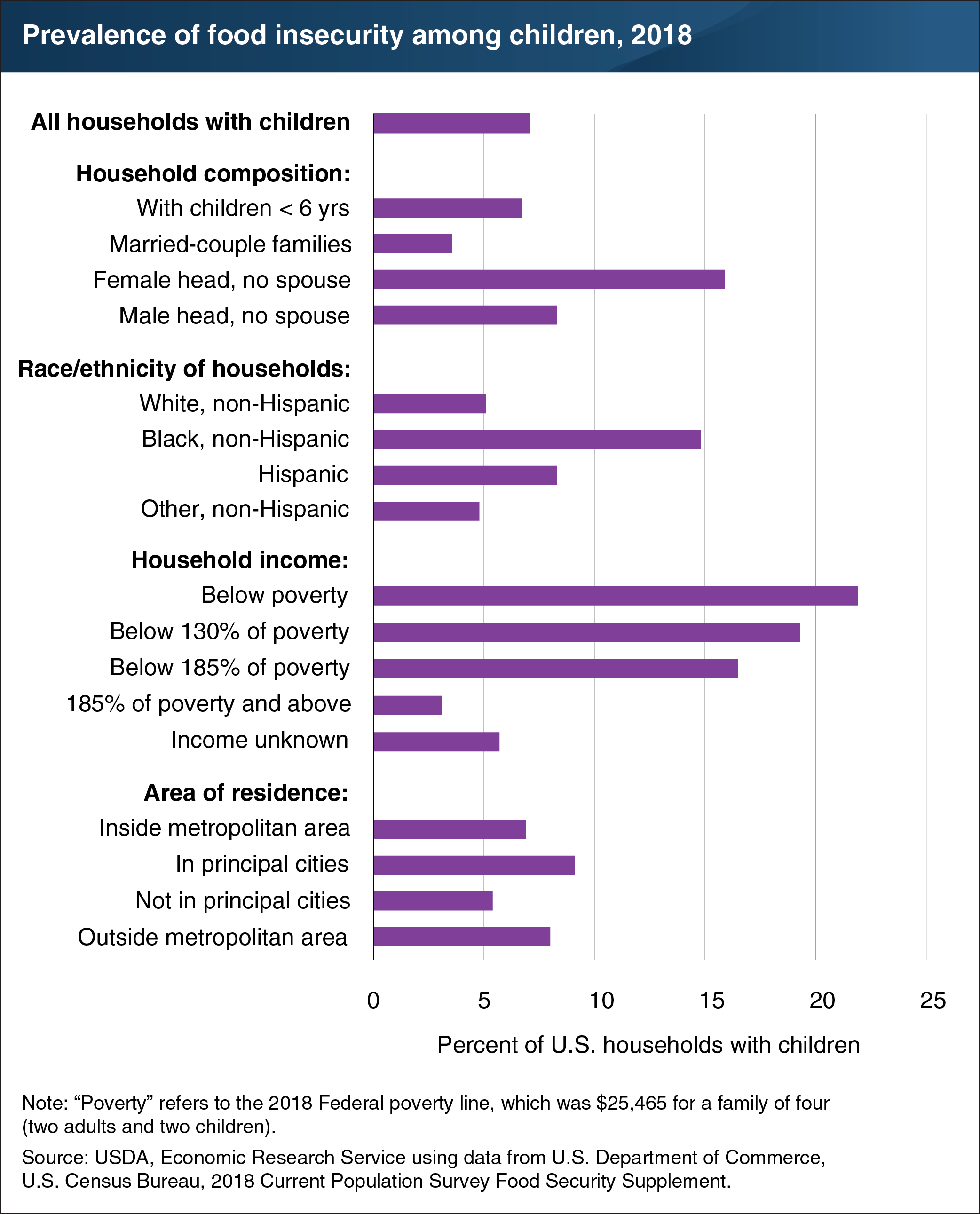Food insecurity among children most prevalent among single-mother households and low-income households in 2018
- by Alisha Coleman-Jensen
- 4/8/2020

In 2018, one child or more was food insecure in 7.1 percent of U.S. households with children. These 2.7 million households with food insecurity among children were unable at one or more times during the year to provide adequate, nutritious food for their children due to a lack of money or other resources for obtaining food. However, food insecurity among children varied widely by household characteristics. Food insecurity among children was more than twice the national rate in female-headed households with children (15.9 percent), households with children headed by Black, non-Hispanic adults (14.8 percent), and low-income households with incomes below 185 percent of the Federal poverty line (16.5 percent). Food insecurity among children was also higher than the national average in households with children in principal cities of metropolitan areas (9.1 percent). This chart appears in the article, “Food Insecurity Among Children Has Declined Overall But Remains High for Some Groups,” in the December 2019 issue of the Economic Research Service’s Amber Waves magazine.


